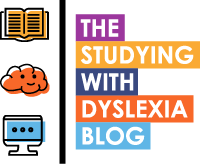 |
In June I will be visiting the Crossbow Education's SpLD Central meeting in Staffordshire.
The keynote speaker at this meeting is Dr Gavin Reid, an international consultant and psychologist, an acclaimed speaker and the author of many books on dyslexia and other learning difficulties.
I was curious to know more about Gavin and his work and so thought I would share some information that I found on his website.
Gavin writes...
Dyslexia and inclusion - Five Signposts For Inclusion.
The challenge facing educators today in relation to inclusion results from conflicts arising from traditional pedagogical perspectives, social attitudes, conventions and perceptions. These challenges are encapsulated in the five signposts for inclusion shown below.
Five signposts to inclusion Signpost 1
Acknowledging differences While it is accepted that there are common factors in dyslexia, (BPS, 1999; Report of the Task Force on Dyslexia, Republic of Ireland, 2001; Reid, 2003), it is essential that these do not dictate pedagogical approaches and that the individual differences of children with dyslexia are acknowledged. It is more helpful therefore, rather than ask the question, ‘what is the best approach for dyslexic children’, to ask ‘what are the barriers that prevent that child from learning?’ (Wearmouth, Soler and Reid, 2002). This implies that the needs of each child should be viewed within the learning situation, and environmental and curricular factors should also be considered alongside any cognitive aspects that may impinge on learning. Morton and Frith (1995), Frith (2002) provide a framework, the causal modelling framework, that can be used to help identify these barriers. The framework consists of biological, cognitive, behavioural and environmental factors and emphasises the interactive nature of learning. The framework also emphasises the different profiles that can be associated with dyslexia. Indeed in the UK the BPS working party report on dyslexia (BPS, 1999) identified ten different hypotheses that can relate to dyslexia. Additionally the Task Force Report (Government of Ireland, 2002) indicated that ‘since the difficulties presented by students with dyslexia range along a continuum from mild to severe, there is a need for a continuum of interventions and other services’ (p31). Therefore, it is crucial that the identification and planning for intervention for children with dyslexia acknowledges this continuum and the individual differences associated with this as well as the role of classroom and environmental factors.
Signpost 2 – Recognising Strengths
There has been considerable pressure from many groups and individuals (Johnson and Peer, 2003; Sayles, 2001; Reid, 2003, West 1997) to recognise the strengths of children with dyslexia. If the barriers to literacy can be removed or minimised these strengths can be revealed, and the child will be able to access the curriculum and fulfil his/her potential. It is important, therefore, to ensure that literacy, however important, does not impede progress in learning and thinking. Multiple intelligences approaches (Garner, 1999; Lazear, 1999) highlighting eight ways of learning and, of course, effective differentiation in terms of presentation of material, can both be used as a pathway to effective learning. The multiple intelligences framework can have particular applicability for students with dyslexia. Lazear (1999) highlights how these can be used, not only in individual subjects, but across the whole curriculum to ensure metacognitive transfer. One example of this can be the use of visual imagery combined with music – practice at this can help the student develop visual abilities and if he/she were to verbalise these it can have a spin-off effect on language and storytelling. He also indicates how the reverse can apply when students can try to impose appropriate sound into a story they have read. Similarly bodily/kinaesthetic intelligence can be applied in all subjects – in history a dramatic account of a historical incident can help develop kinaesthetic/bodily intelligence, as can learning particular folk dances from different cultures and different historical periods. Bodily/kinaesthetic intelligence is one that is often overlooked in class subjects and this, and some of the other ‘intelligences’ in the multiple intelligences model, can highlight the strengths of young people with dyslexia. The work of Galaburda (1993), and the examples from West (1997, Reid 2003) highlight the potential creativity and problem solving skills of children and adults with dyslexia. - See more at: http://www.drgavinreid.com/free-resources/dyslexia-and-inclusion/#sthash.CUswnK8U.dpuf
Click here to visit Dr Gavin Reid's website to read about signposts 3 to 5.
